The lessons of the mountains, the lessons of local conflicts
Losses from mine explosions during the same period of 1980 amounted to 59% of the total. Of the total number of bombed tanks 17% were irretrievably lost or required major repairs. An explosion under one of the tracks did not only tear it apart, but depending on the power of the charge one or more track rollers and suspension units were broken. The impact of the explosion on the bottom led to its deflection, concussion or death of the driver.
Tanks "IF" has always been and will be for a long time, but their appearance is always associated with the tasks of the coming war or wars. “Against whom are we friends?” Diplomats ask themselves the question, while the military and the designers must answer him in their own way. Naturally, the lessons of recent campaigns should be used with maximum efficiency.
“Let us recall 1994 – 1996 of the year, in particular, the New Year's assault on Grozny,” Colonel-Journalist Vladimir Matyash addressed readers of the Krasnaya Zvezda newspaper.
“The streets of the city were literally clogged with tanks, armored personnel carriers, infantry fighting vehicles, self-propelled howitzers,“ Nonami ”,“ Tunguska ”, which became in a limited space without reliable cover of motorized riflemen, in fact, targets. In the current campaign (this was during the “Second Chechen War”, which was officially called the “counter-terrorist operation”) tanks and artillery did not go ahead of the infantry, but, suppressing the fire resistance units, ensured its advancement. In turn, the competent actions of motorized rifle subunits precluded the possibility of the effective use by the bandits of anti-tank weapons to destroy armored vehicles. They simply were not allowed to approach the distance of a valid shot. Yes, and armored vehicles significantly strengthened their protective shell. From here - a minimum of losses. Thus, during the storming of Grozny, only one tank was destroyed, which with its side covered the evacuation of the wounded.
“We have learned serious lessons from the past company,” said the former commander of the tank platoon, and now the chief of staff of the tank battalion of the motorized rifle brigade, cavalier of the two Orders of Courage, Major Tsymbalyuk.
After the New Year storming of Grozny in 1995, only 5 tanks remained from this battalion. Now there are no casualties in the unit, largely due to the high combat characteristics of the T-72. And yet the officer, as they say, put an edge to the question of the unreliability of the TAPM (fire fighting equipment) T-72, the problem of detecting the enemy in difficult conditions with standard surveillance devices, the need to install secret communications equipment on the tank. Fighting strongly dictates the need to equip all crew members with automatic weapons. Of course, designers need to modernize modern tanks, taking into account the experience of local conflicts in recent decades.
In the mountains, the engine heats up, power is not enough, because you had to climb 1200 meters. Caterpillars, especially in icy conditions, do not provide reliable adhesion with stony soil. And in the tank is cold. If some kind of heat is stored in the fighting compartment, it is not in the control compartment.
Right, apparently, a mechanic. So, comrades scientists, take care to ensure the soldier under armor even the slightest living conditions. And one more said foreman Protsenko. Installing or removing batteries (T) on the T-72, even under normal conditions, is not easy. And they “sit down” rather quickly, especially in winter conditions. So, to replace the battery, it is necessary to remove the driver's seat, weighing about 70 kg, and then through the hatch to raise the battery itself vertically, no less heavy. On the T-62, everything is much simpler, you don’t have to lift anything - the battery can be freely lowered into the landing hatch of the battery ...
The commander of the T-72 tank sergeant of the contract service Petelnik, who also participated in the hostilities, derived from them his own vision of the problems:
“Militants sought to hit the left side of the tower and under the turret space, trying first to disable the aiming devices, which sometimes succeeded.
The gangsters used another weak spot of our car: after the shot, the gun becomes on the hydrostop for the next loading. Time passes a little, but it is this moment of forced inactivity that the adversary is using. In addition, in the conditions of mountains, low temperatures, dampness, it happened that the control unit of the loading mechanism failed. We took it out and heated it on a fire, after which everything went fine. Another problem: after the complete exhaustion of ammunition, it is necessary to move away from the position to load the container. First, the precious time goes, secondly, the position has to be left unmasking itself, thirdly - the crew is forced to leave the combat vehicle, being exposed to the impact of small arms. It would be nice to have an armored transport-charging machine, like rocket men. "
Certain shortcomings of the armored vehicles used in the counterterrorist operation are also characteristic of other vehicles. Imperfection caterpillars, for example, fully applies to self-propelled howitzers, and to BMP, because they slide over the mountains. Therefore, already in military conditions, the Main Automobile and Armored Directorate had adjusted their refinement - the lugs were fixed on the tracks.
One of the most important tasks in the course of a counter-terrorist operation was that the commanders considered and consider saving lives of soldiers. Indeed, the losses in the current operation are significantly less than in 1995 – 1996. Scientists, designers, industrialists were shown the tank T-72, received in battle nine direct hits of anti-tank weapons. The combat vehicle lost mobility, but retained the ability to fire. The crew members, largely due to dynamic protection, did not receive any injuries or contusions. Four hours led the battle of "seventy-twos". And if the Arena system had been installed on the tank, neither the ATGM nor the grenade launchers would have taken it. Almost 19% damage to armored vehicles received from mines and mine bombs. Really, since the Afghan war, scientists and designers have not developed an opposition to them - a reasonable question arises. Designed and highly effective. This is electromagnetic protection, both for tanks and for infantry fighting vehicles, armored personnel carriers. Alas, the same financial difficulties do not allow it to be widely introduced into the troops.
During the fighting, the BMPs were struck with anti-tank weapons. When cumulative grenades hit the sides, they were often sewn through. Near one of these machines, representatives of the manufacturer lingered for a long time. They could not, had no right not to examine all the circumstances of the destruction of the BMP. Moreover, it seems that one of the colleagues of the fallen motorized infantry, next to a through hole above the right track, painted white and fair words with white paint: “Remember, here are the souls of our boys”.
The sides of the armored personnel carrier and the BMP motorized riflemen managed to strengthen the boxes with sand, cartridges, spare wheels, using ropes and even waist belts. Hearing about this, the representative of the manufacturer immediately expressed readiness to install special mounting brackets on the armored personnel carriers. It is difficult to say how much the safety of equipment and people will improve such an improvement. And why is it when special protective screens are developed and tested? The whole question is how soon they will be equipped with infantry fighting vehicles and armored personnel carriers. However, even less costly work on the improvement of technology, alas, today we have become a stumbling block.
It is known, for example, that the personnel of subunits are often placed on the body of an armored personnel carrier and infantry fighting vehicle. Well, is it worth it to equip war machines with handrails, holding on to which it would be possible to avoid a fall in case of an explosion or an unexpected collision with an obstacle? Their absence sometimes causes injuries, even injuries, to death of servicemen. ”
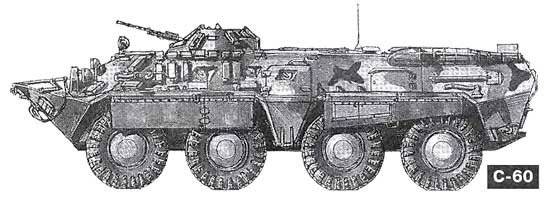
BTR-80 of the period of the Chechen campaign 1995 – 1996 with “reactive armor” blocks installed on it and improvised armor chassis
And here is another example of “from the same opera”: during the fighting, especially in the mountains, for example in Nagorno-Karabakh, on the T-55 and T-72 tanks, the crews turned off the gun stabilizers to protect themselves from the too-swinging breech , and fired only from short stops.
Another very important lesson learned during the battles with Chechen militants was associated with the particular vulnerability of Russian tanks, due to the presence of an automatic loader on them.
In foreign tanks "Abrams", "Leopard-2" used unitary shots with manual loading, carried out by the fourth member of the crew. Domestic tanks T-72, T-80, T-90 use separate loading shots with a burning sleeve, and the loading is carried out by automatic loading, which reduced the crew’s crew to three (commander, gunner, driver) and simultaneously significantly increase the rate of fire. The automatic loader includes a rotating annular conveyor with a vertical axis, located on the tank floor and containing radially arranged cartridges with projectiles and powder charges, an elevator lifting the cartridges to the loading line, and a chain rammer located in the tower chase, as well as an ejection device from the tank of the pallet burning sleeves! The location of the conveyor on the tank floor for relatively weak armor and the presence in the conveyor of a large mass of easily flammable burning shells in Chechnya led to numerous cases of tank wreckage when cumulative grenades of anti-tank grenade launchers hit the space between the rear rollers, where it was very convenient to shoot, leaning out manhole or from the cellar.
However, the most important thing was that, as before, even the new domestic machines could not fight in urban environments. As reported in his article “First Round: Russians in Chechnya”, in the March issue of the Journal of Military Ordnance, an American armored vehicle expert Leicester V. Grau, our BTT losses in Chechnya only in the first month of the conflict 1995 g., Accounted for 225 machines - 10,23% of their total!
Already 20 February 1995, Lieutenant-General A. Galkin, then head of the Main Armored Directorate Directorate of the Ministry of Defense of the Russian Federation, held a conference at which all these sad facts were discussed, but it was impossible to expect a quick result anyway Grau, referring to well-known Russian sources, our troops lost 846 military vehicles of various types from 2221 armored vehicles involved there (38%) in Chechnya.
According to our domestic data, by the time the major battles in Chechnya were completed in May 1996, Russian troops had irretrievably lost an 331 armored vehicle unit (tanks, armored personnel carriers and infantry fighting vehicles), mostly destroyed by RPG jet grenades - perhaps the most popular weapon among Chechen action films after the submachine gun Kalashnikov.
Under these conditions, the fighters again tried to turn to “front savvy” and book their cars not only with sandboxes, but also with blocks of dynamo-active armor, but this was not always the case for rescuing “upgrades”. As a matter of fact, we again repeated the situation of the end of 1945, when protection against the fire of German faustpatrons had to be found using a variety of improvised means, which did not always help to escape.
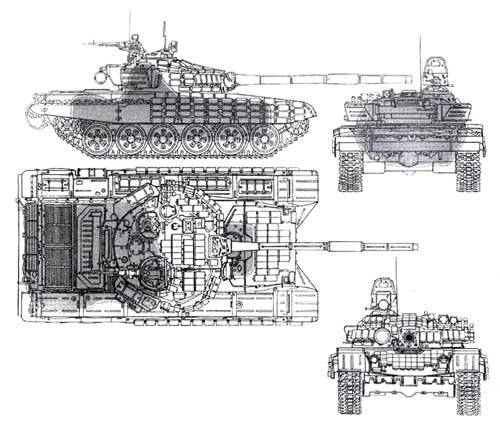
Scheme of the defeat of the T-72 tanks in Chechnya in 1994 – 1996. (according to Steven's Pledge)
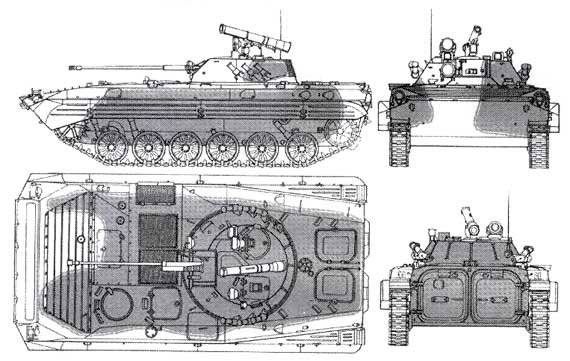
Scheme of defeat BMP-1 in Chechnya in 1994 – 1996 (according to Steven's Pledge)
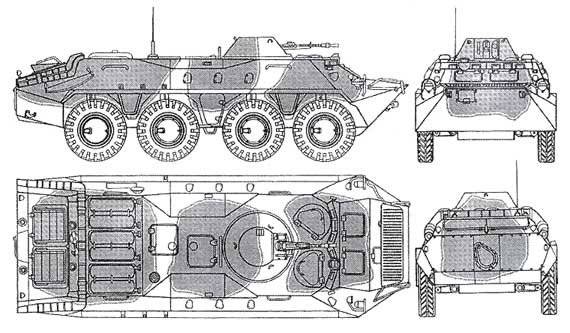
BTR-70 defeat scheme in Chechnya in 1994 – 1996 (according to Steven's Pledge)
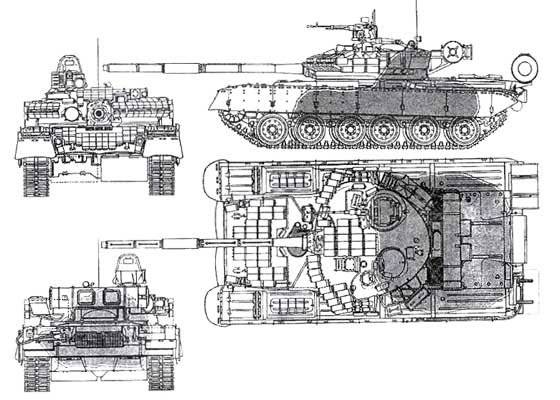
Scheme of the defeat of the T-80 tanks in Chechnya in 1994 – 1996. (according to Steven's Pledge)
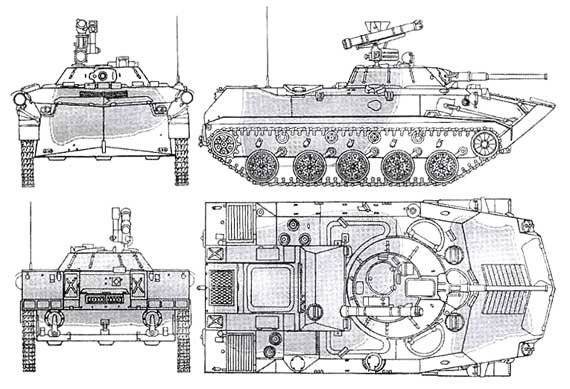
BMD-1 lesion pattern in Chechnya in 1994 – 1996 (according to Steven's Pledge)
On herein Schemes domestic tanks, BMP, BMD and APCs belonging known American expert Steven Pledge, well visible band vulnerable to antitank RPG-7 and RPG-18 not only for light armored BMD-1 and BMP-2, but on machines like T-72 and T-80! And there is nothing surprising in the fact that, until today, our motorized infantry riders prefer to drive around the BTR-70 armor rather than under it. With the 100% zones on it, driving inside such a machine under RPG fire is just suicide!
However, the most amazing thing about this stories with the "lessons of the mountains" is that by this time our army had already managed enough of the war in the mountains, and even made certain conclusions from the obtained combat experience!
We are talking about the actions of our tanks on the territory of Afghanistan, which appeared there in December 1979. And it was so that the composition of our troops that entered the territory of this country included not only three tank divisions, but also tank regiments of divisions, and tank battalions of motorized rifle divisions. regiments. The first were soon brought back to the Union, since they had no one to fight with in the conditions of the Afghan war, but the tank battalions were left to guard the roads, escort the columns and, where possible, support the motorized infantry with fire and tracks.
The divisions of the Turkestan IN, which entered Afghanistan, were armed with T-55 tanks. But in anticipation of combat operations in 1980, troops began to receive T-62 and T-64 tanks. The latter, however, did not withstand the tests of the highlands — they let the two-stroke diesel down, and they did not stay long in the DRA. But T-55, T-62 and partially T-72 fought long enough in the mountains.
The specificity of the terrain and combat use, as well as the tactics of the Mujahideen, quickly revealed the main drawback of Soviet tanks: weak defense against mines and cumulative ammunition. Actually it was not a discovery for designers and the military - even during the Arab-Israeli wars in 1968 and 1973. T-54 / 55 and T-62 type tanks were easily hit by an ATGM and RPG. However, in the “right” field war, tanks almost always had freedom of maneuver, the possibility of using all the firepower of their own and attached units on the identified anti-tank weapons. In the end, the very diversity of combat situations rarely led to a duel tank - RPG or tank - ATGM. In this regard, the shortcomings in the protection of Soviet machines in the Middle East were compensated by a number of advantages: low silhouette, good mobility over the sands and sufficient fire power.
Another thing is Afghanistan. Here, the tanks had no other enemy than a single Mujahid with a grenade launcher and mines that littered the roads. There was practically no freedom of maneuver: either traffic along the roads, or fire from a place at roadblocks. Even in places where the terrain allowed them to leave the road, it was in most cases impossible - the roadsides were tightly mined by the enemy. Finally, the attack itself was carried out by the Mujahideen where the survey of the crew is minimized - in mountain defiles, in the green zone or among deaf duval villages.
All this led to the fact that the crew at a combat exit could at any moment expect a cumulative grenade into the side or a land mine explosion under the caterpillar. Hope in such a situation accounted for only armor protection, but she just let down.
The relatively thin armor of the sides, roof and stern easily penetrated the RPG-7 grenade. With armor penetration of the order of 400 – 500 mm, a grenade launcher could hit a T-54 / 55 type tank in the forehead. Despite the relatively weak action armor, a cumulative grenade, when hit in the turret, usually killed one or more crew members, could disable the weapons, and undermine the ammunition. Getting into the engine compartment made the car a fixed target, and if fuel lines were encountered in the path of the cumulative jet, ignition occurred.
It should also be borne in mind that the enemy is usually not limited to one hit, and fired until the machine was completely out of order. Of course, there were also happy exceptions, for example, when 55 grenades from RPGs hit the T-7 tower, they all pierced the armor, but the crew remained alive and the tank was combat-ready. Unfortunately, not everyone was so lucky. Over the 11 months of 1980, the 16% of tank losses resulted from RPG fire.
Anti-tank mines and land mines were even more dangerous. Losses from mine explosions in the same period 1980 amounted to 59% of the total. Of the total number of the blown-up tanks, 17% were irretrievably lost or required major repairs. The explosion under one of the tracks broke not only her, but depending on the power of the charge, one or several track rollers and suspension assemblies broke down. The impact of the explosion on the bottom led to its deflection, contusion or death of the driver. The use of mine sweeps did not always provide security. Knife trawls on stony soil were useless, and various tricks were used against the Katkovs: radio control, the rate of operation of the fuse (the bomb exploded not under the trawl, and sometimes in the middle of the column) and many other ways of mining.
Thus, already the first operations gave significant losses in military equipment. Strengthened protection was required, and the troops began their own improvisations: hanging boxes of ammunition, sand and rubble, spare support rollers, tracks of tracks, tanks with water, oil and fuel on the armor.
Then they put the case on a production basis, and most of the tanks were equipped with additional protection. On the sides of the hull rubber-fabric screens were hung; An additional cermet unit in the form of a box-shaped structure made of armor plates 30 mm thick was installed on the frontal part, inside which 5-mm steel sheets with 30-mm gaps filled with polyurethane foam were placed. Similar in design "eyebrows" were hung on the frontal part of the tower to the right and left of the gun.
However, the measures taken did not significantly reduce the dynamics of losses, therefore at the beginning of the 1980-ies. conducted a great research work on the deep modernization of T-55 and T-62. In May, 1982 was visited by a large group of designers and plant directors headed by the head of the GBTU, Colonel-General Potapov. And in March, 1983 adopted the upgraded T-55М, T-55АМ and Т-62М. They were reinforced with anti-mine protection: a honeycomb frame on the bottom of the hull under habitable compartments made of steel channel or a corner with a width of 80 mm, covered with six bottom armor plates 20 mm thick; expansion stand-pillers in the department of control behind the driver's back to prevent the bottom from deflection during an explosion; special mounting of the mechanic's seat on a poly-ke, welded to the board and having a gap with the bottom of the body in 30 mm, so that the energy of the explosion does not affect the seat directly; a cover over the first pair of torsions with a 20-mm rubber mat to protect the mechanic's feet; 20-mm reinforced emergency access cover. In addition to the already introduced anti-cumulative protection measures, steel lattice screens were installed on the sides and stern of the hull and turret, which destroyed RPG grenades without exploding.
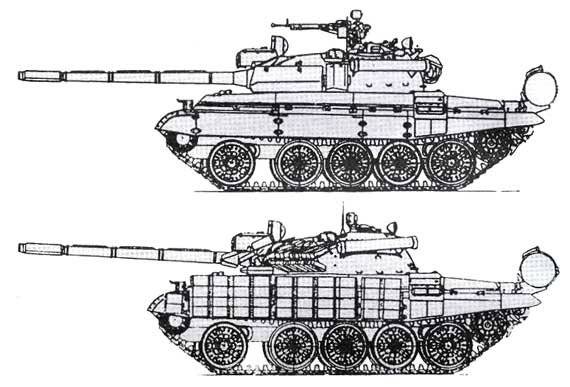
T-55М tanks (1983 g .; above) and T-55МВ (1985 g.) - T-55 upgrades made on the basis of the Afghan experience
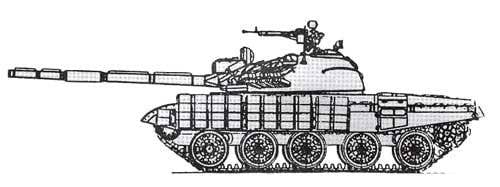
Upgraded T-62M tank (1983 g.)
The protection against incendiary weapons was also improved. To this end, protective meshes with a small cell and protective steel tubes for external wiring were installed on the roof of the transmission. On the upgraded tanks, a new Volna fire control system with a guided weapons complex and the 902B Tucha smoke grenade launch system were used. The mass of upgraded machines exceeded the 40-ton line, so they needed to install a forced to 620 l. with. engine.
The running gear was also improved. They introduced reinforced rubber-metal hinges and track lugs, new torsion shafts, hydraulic shock absorbers for the second pair of support rollers of T-62 tanks.
Modernization during the Afghan war gave impetus to the search for ways to further strengthen the T-54 / 55 and T-62 tanks, which in 1988 were, respectively, 36,5 and 25,7% of the tank park of the USSR. It was aimed mainly at improving security by setting dynamic or active protection and increasing firepower. These measures were, of course, forced, due to the lack of more modern machines. With the adoption of the Treaty on the Reduction of Conventional Arms in Europe, work on the further improvement of obsolete tanks was curtailed. A sharp reduction in the tank fleet was carried out primarily due to the T-55 and T-62, more than 30 years in service.
Thus, neither in Afghanistan nor later in Chechnya have they done anything fundamentally new to improve our tanks. But for some reason, the experience of the Afghan mountains in Chechnya from the very beginning “did not go,” and our military, according to the already sad tradition, were again forced to learn from their own mistakes and pay for it with the lives of innocent people!
As already noted, most of the tanks immediately broke out after they hit the area, while our military was well aware of at least one tank, which, even when it was shot down, practically did not burn. We are talking about the famous Israeli tank "Merkava" (Chariot), which from 1982 also had to fight in cities, and in mountainous, desert terrain. Major-General Israel Tall, who designed it, was a member of all the Arab-Israeli troops, so before he got down to the blueprints, his group of tank officers read a close look at the statistics on the distribution of shell hits to tanks. This analysis showed that their greatest number falls on the frontal part of the tower, therefore, it was necessary to minimize the frontal projection of the tower of the prospective tank, “drowning” it into the hull. The tank should have the highest possible level of protection, even to the detriment of mobility. The limited human resources of the country dictated, first of all, the need for maximum protection for crew members: let the tank be completely disabled, but the crew must survive. Statistics showed that in the case of detonation of ammunition crew, as a rule, die completely. So, to the maximum extent, the armor should be covered by crew members and ammunition. Additional protection can be provided by placing the engine compartment in front of the hull, in addition, with this arrangement, the crew gets the opportunity to leave the damaged car through a hatch in the rear part of the hull - the least vulnerable to frontal fire.
Much attention was paid to the convenience of the tank. The designers proceeded from the postulate “a tank is the crew’s home in wartime”. Tall proposed a very controversial concept of round-the-clock use of a tank, for which it was planned to place two crews in one car - one is resting, the other is fighting. If necessary, the back-up crew can be used to evacuate the wounded from the battlefield. Without a doubt, this concept led to an unprecedented increase in the tank hull volume and tank size in modern tank building, and the possibility of additional transportation of people inside the tank puzzled many experts who at one time even tried to isolate the Israeli vehicle as a special type of BMP tanks.
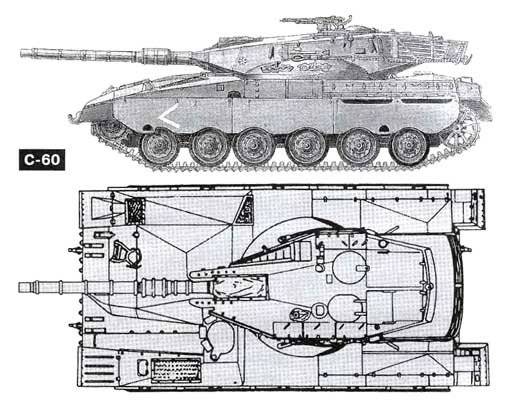
Israeli tank "Merkava" Mk.2
Interestingly, the volume of the turret of the tank "Merkava" turned out to be much less than that of other main battle tanks; due to the low landing of the crew members, it was possible to reduce the height of the tower and reduce the area of its frontal projection to about 1 м2. The shape of the tower, wedge-shaped in plan, contributes to the rebound of shells during shelling from the front hemisphere. A large basket is fastened to the stern niche of the tower, along the perimeter of the lower part of which chains are hung with steel balls at the ends. The chains provoke the destruction of a grenade warhead of wearable anti-tank weapons, such as RPG-7, before they come into contact with armor.
The cannon trunnions are positioned closer to the breech than is customary, which made it possible to keep the angle of descent of the barrel equal to -8,5 ° without increasing the height of the tower itself.
Unitary shots to the gun are stored in fiberglass containers with an internal rubber insulating coating, four shells each. Most of the ammunition is located in the aft of the hull of the tank, in the turret there are only eight shells ready for firing. Additional protection of ammunition is provided: from mines detonation - with a fuel tank located under the location of the containers with shots, from above - with a fresh water tank installed directly under the upper armor plate and a significant overhang of the tower niche with the “basket” attached to it. Containers are loaded through a double hatch located in the stern armor sheet. Standard 62 rounds can be increased to 84. The loading time of ammunition is 15 – 20 minutes — three times less than that of the German Leopard-1 tanks or the French AMX-30.
During the 1982 battles with Syrian tanks, Israeli vehicles demonstrated high survivability, and this despite the fact that the shells of Soviet T-72, as it turned out, pierced their frontal armor, not only on the hull, but also on the tower! At the same time, the battles with Soviet tanks fully confirmed the correctness of the concept chosen by General Thalem: crew protection above all!
A well-known example is when a battalion of Syrian T-72s, making a night march, unexpectedly stumbled upon a unit of Merkava tanks that were waiting for the arrival of the tankers. A fierce night battle ensued, in which Syrian tanks demonstrated their advantage over the Israeli ones due to the higher rate of fire of their automated guns and the best night vision devices. However, having quickly shot their own armor, the Syrians did not see the results of their shooting, since Israeli tanks did not catch fire or explode. Almost without suffering losses, the Syrians withdrew, but after a while they sent intelligence, which found a truly amazing picture: on the battlefield stood enemy tanks abandoned by the crews with numerous holes in corps and towers. But at the same time, none of the Merkava tanks caught fire or exploded, but all thanks to its layout and excellent fire fighting system!
On another occasion, the Merkava tank, the Mk.3, received 20 hits from RPG grenades and ATGMs, but despite this, its crew were not injured.
Today there are three modifications of this tank: MK.1, MK.2 and Mk. H, and the last of them is the same weapon, as in the tanks M1A1 "Abrams" and "Lsopard-2". Future plans include the armament of the next modification of the Merkava, the now 140-mm smooth-bore weapon.
The tank came out more than modern and at the time of its creation was considered the best among the tanks of the Western world in terms of protection from anti-tank fire! Even chains with balls at the ends, hung around the perimeter of the “basket” in the back of the tower, helped the latter — a solution that is generally accessible and simple, but it turned out to be very effective. This is perhaps the main achievement of Israeli engineers.
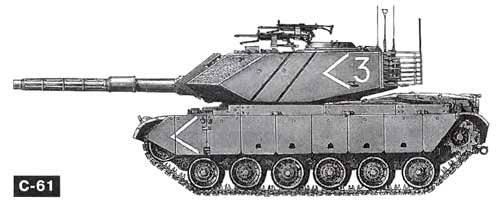
The main battle tank "Sabra" (1999 g.) - Made in Israel, a deep modernization of the American MXNUMHAZ
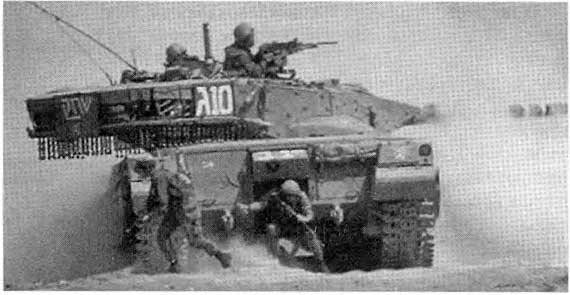
Aft hatch "Merkavy". Chains under the tower are designed to protect against cumulative projectiles.
However, despite its unusual layout, which sharply distinguishes the Merkava from all modern main battle tanks, there are very few technical innovations in its design, and this, first of all, speaks of its price and also that there are different kinds of new items not always justified!
The main indicator of the success of this car is that although during the Lebanese war, Israel lost about 50 tanks Merkava Mk.1, none of them did not catch fire, and the irretrievable losses amounted to only seven cars! Only nine crew members of wrecked tanks died, while casualties among the crews of the American M60А1 tanks turned out to be much heavier.
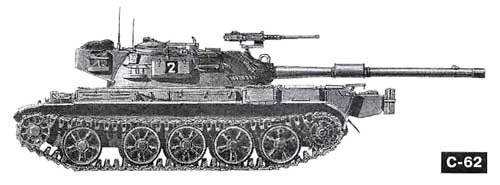
The 77 – 67 tank, which is in service with the Israeli army, is a “hybrid” of the T-54 hull, T-62 turret and 1.7 English cannon (the turret is reversed back)
Here you have a very impressive example of using someone else's experience in local combat conflicts and ... in the mountains!
The main purpose of the Arena Active Defense Complex (KAZ) is to destroy enemy shells and missiles flying towards tanks.
The radar, which is part of the KAZ, detects attacking shells at a distance of 50 m from the tank in a sector equal to about 270 °, both launched from the ground and from the air. After the discovery of an anti-tank weapon, the primary selection of the target is carried out, the trajectory of its movement is determined regardless of whether the projectile is controlled or not. If the target poses a threat to the tank, at a calculated point in time, a protective element is shot off, during the flight of which the tracking of the target continues. Then comes the command to activate the ammunition. When undermined, it does not pose a threat to either the tank or the attacking infantry, but it destroys the ammunition that is flying up. The localized flow hits the target at a distance from 3 to 6 meters from the tank, depending on the conditions of its approach. The time from detection to destruction of the target is 70 milliseconds. After 0,4 seconds, the complex, which works automatically, is ready to reflect the next cone. The commander’s remote control displays information about the operation of the complexes and the number of ammunition remaining.
After the battle, the used ammunition is easily removed from the mines, and new ones are installed in their place. Full reloading of the complex by the entire crew is about 15 minutes.
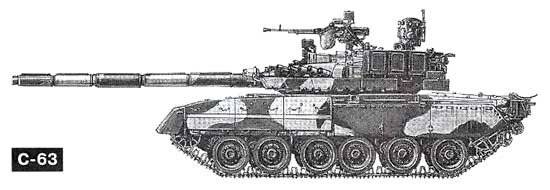
Russian modernized tank T-80UM1 "Bars", equipped with the complex "Arena" (1998 g.)
KAZ "Arena" successfully fights with all types of anti-tank guided means, including promising ones. Equipping tanks with active defense systems increases their combat effectiveness — depending on the conditions and type of hostilities — from 2 to 3 – 4 times.
Information